The importance of a good saddle
By: Maribel Estefanell Posted: 09/06/2023
The horse has been an ever-present ally of humans. Our relationships with horses have varied throughout history.
Since it was first domesticated, the horse has performed different types of work, in agriculture, in wars and as a means of transport.
In the beginning, the first horsemen had no saddle, so bareback was the only option. This required a lot of balance and skill as the rider didn’t have any equipment to control the horse.
This important piece of tack enables the rider's bodyweight to be better distributed. Saddles ensure comfort and security while protecting your riding partner.
Generally speaking we could say that a saddle is a riding tool, a seat that gives the horse rider the necessary support, security, and control over the animal, especially at higher speeds.
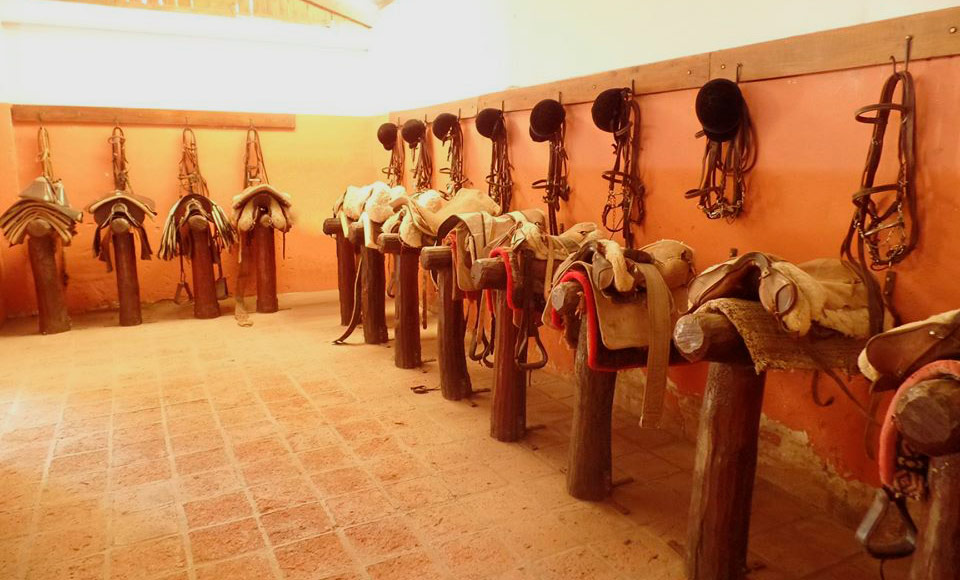
The origin and evolution of the horse saddle
Do we really know who invented the saddle and why it became so popular?
The saddle probably originated more than 2000 years ago in the tribes of the Asian steppes, where horses were crucial to daily life.
Thanks to the saddle, the horse became an ally in wars, as the horse allowed warriors the necessary support and a great advantage over an enemy on foot.

The first saddles were simple fabric strips which were wrapped around a horse back, but they soon evolved into elaborately stitched leather saddles.
The stirrups were then added. With them, the rider could control his posture and also the animal, only with his feet.
The first stirrup-like object was invented in India and consisted of a simple leather strap in which the rider’s toe was placed. The nomadic tribes in northern China are thought to have been the inventors of the modern stirrup.
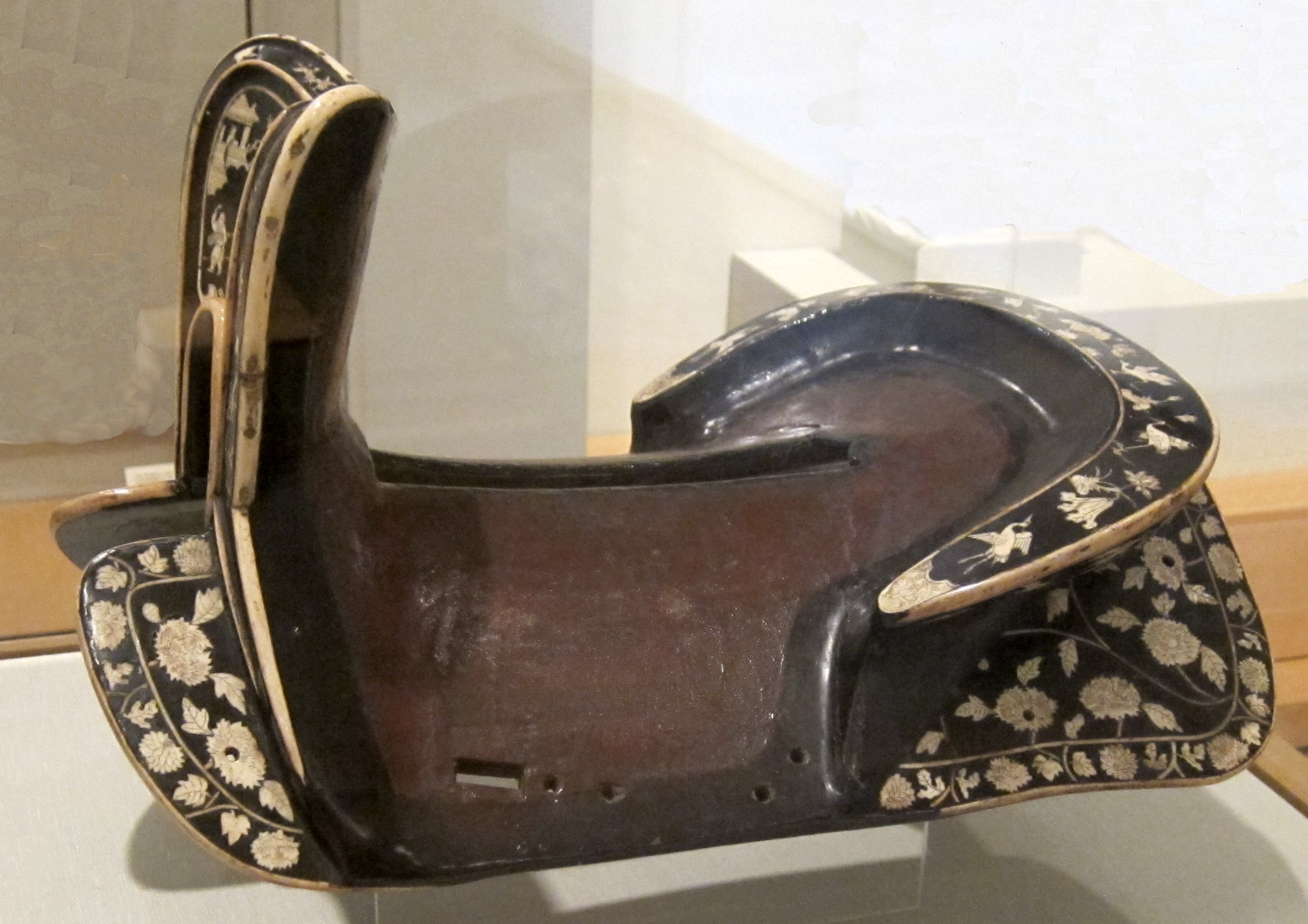
Chinese Saddle, Ming Dynasty (China 1572-1620)

17th Century Saddle
Over time, saddle design has changed for the comfort of horse and rider – from the large wooden trees in the Middle Ages to the English saddle for fox hunting.
Its different parts were adapted, creating different types of saddles according to their uses. Thus, at first the stirrups were very long, with the legs hanging down on either side. In the case of English saddles, stirrups became shorter allowing the legs to be slightly bent, especially in jumping.
Would you like to be part of a group with an equestrian soul?
Join the Ampascachi Community. Obtain exclusive benefits for your holidays.
We tell you how to start, train and take care of your horse.
Interviews with direct providers of riding tours around the world.
Opinions of outstanding equine scientists and personalities in the equestrian sport world.
Characteristics and parts of a saddle
Before describing each type of saddle, we must understand that a saddle consists of several items.
These are the different parts of a saddle:
- Tree: The base on which the rest of the saddle is built. Usually based on wood or a similar synthetic material, it is eventually covered in leather or a leatherlike synthetic.
- Seat: It’s the place where the rider sits. The seat is available in different styles and sizes, depending on the needs of the rider.
- Bars: The bars are two internal structures that run down the length of the saddle. They protect the horse’s spine and distribute pressure from the rider's weight evenly across the horse's back. They are usually filled with latex foam or foam rubber.
- Skirt: The skirt is attached to the saddle seat and is extended down the horse’s sides. It prevents the rider's legs from rubbing and protects the horse.
- Knee brace: It is placed in front of the skirt and it helps prevent the rider’s knee from shooting forwards and upwards, thus keeping it in a more stable position.
- Cinch or girth: It is the strap used to keep the saddle in place. It passes under the barrel of the horse.
- Billets: These straps are placed under the skirt on either side of the saddle to keep the cinch in its place.
- Stirrups: They are loops with flat bases which are hung from a saddle to support the feet of a rider. There are different types of stirrups depending on the type of saddle. They have a flexible joint that generally makes it easier to release the foot in the event of a fall.
- Stirrup straps or leathers: They attach the stirrup iron to the rest of the saddle. They can be adjusted to get the proper fit for the rider.
- Fender: The connection between the stirrups and the main body of the saddle is called a fender.
- Horn: The horn is the most recognized part of a Western saddle. It is located at the front of the seat on the top of a fork. The horn is used to tie one end of the rope belonging to the horse, especially in livestock activities.
- Cantle: The cantle is the part of a saddle that provides back support for the rider. It is also gently sloped upwards to provide proper back support.
- Sheepskin: Spanish saddles usually include a sheepskin pad.
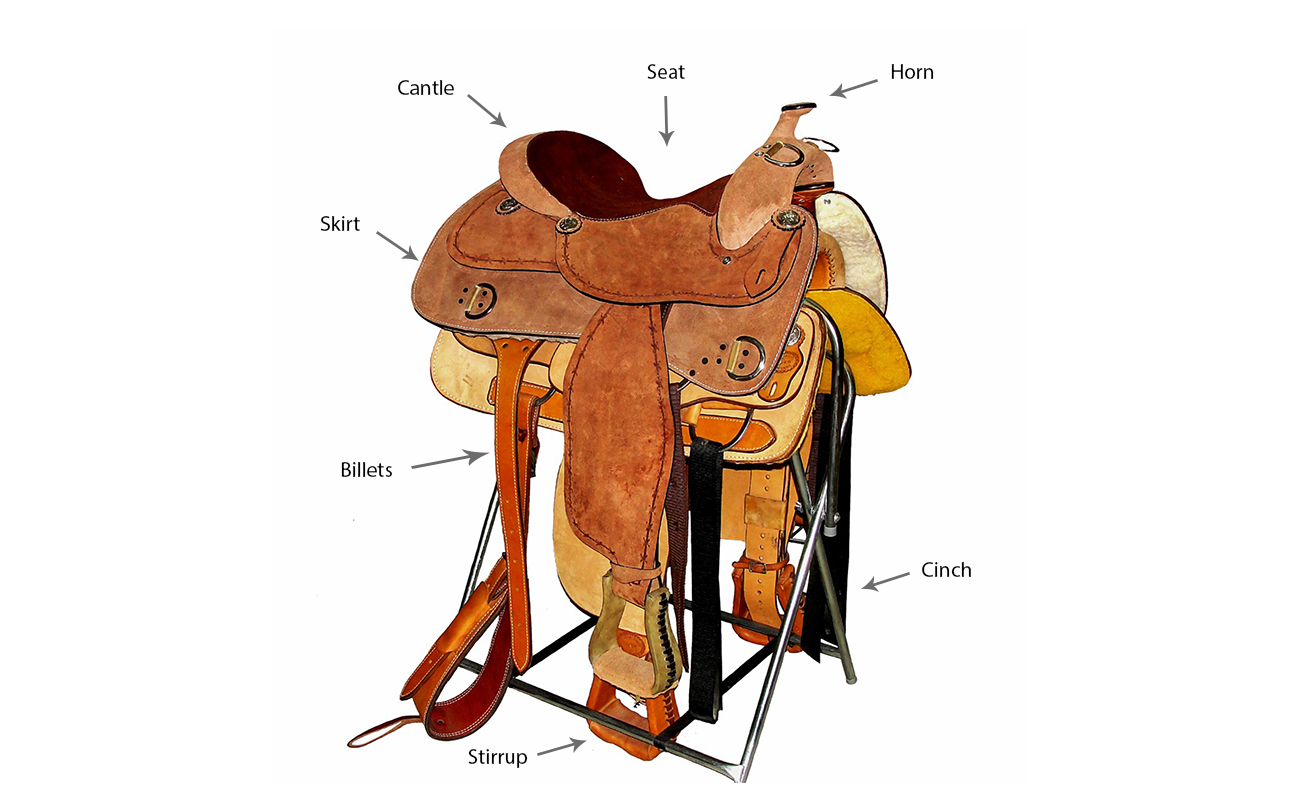
When selecting your saddle, take the following factors into account:
- Weight: It depends on the type of saddle. English saddles are typically smaller and lighter than Western saddles. As a recommendation, a lightweight saddle will have less of an impact and can be safer for the horse.
- Materials: There is a great variety. You should always look for soft materials.
- Size: To choose the correct saddle seat size, you should take the rider’s weight into consideration.
Types of horse saddles
Saddles come in a wide array of types and sizes. When selecting a saddle, you must first consider your riding skills and what you are going to be doing with the saddle.
We need to be aware of how important a proper fitting saddle is for both the horse and the rider.
Let's have a look at the different types of saddle:
- English Saddle: It is also known as general purpose or hybrid saddle. It is perfect for beginners. Highly versatile. Comfortable, small and light weight. It is the most commonly used. Its simple and effective design makes it a very popular saddle in different equestrian competitions.
- Spanish Saddle: Very comfortable for both horse and rider. It leaves the withers (the ridge between the shoulder blades of a horse) completely free to move. Ideal for long rides thanks to its deep seat and long stirrups that allow you to ride with a long leg and only slightly bent.
- Western Saddle: It is smaller than the Spanish saddle, but just as heavy. It is usually placed on top of a blanket or pad that helps protect your horse's back. Western saddles have a thicker horn for securing a rope, as they were originally meant for roping and dallying cattle. They are the "cowboy" saddles familiar to movie viewers.
- Australian Stock Saddle: It combines some features of both English and Western saddles. The deep seat and big knee rolls offer the stability needed for riding on rough and challenging terrain. It has a smaller horn and is perfect for working around the ranch and for rodeo.
- Endurance Saddle: This saddle is ideal for equestrian tourism, trail riding and long rides on rough terrain. It’s sturdy yet lightweight and guaranteed to offer comfort as it has padded seats.
- Dressage Saddle: Similar to the English type, this saddle has a deep seat and straight saddle flaps, which makes it ideal for advanced riders who compete in dressage competitions.
- Natural Horsemanship Saddle: Designed to maintain a close contact with the horse, this saddle consists of a thick blanket with buckles and stirrups. It doesn’t provide much balance, especially at a gallop.
- Jumping Saddle: This type features a design that offers balance and security when jumping. With its flat seat and forward cut saddle flaps, the rider can bend his knee and have a shorter stirrup.
- Racing Saddle: Designed specifically for jockeys and racing, this type has a flatter seat and short stirrups.
- Polo Saddle: This saddle is used for mounting games like polo. It has straight and long flaps, a flatter seat, and has no padding under the leg to allow the rider to move freely.
- Side Saddle: Invented with a two-pommel design to allow women to ride with both legs on one side of the horse, the side saddle guarantees security when galloping and jumping. Nowadays, it’s also used by riders who have injuries.





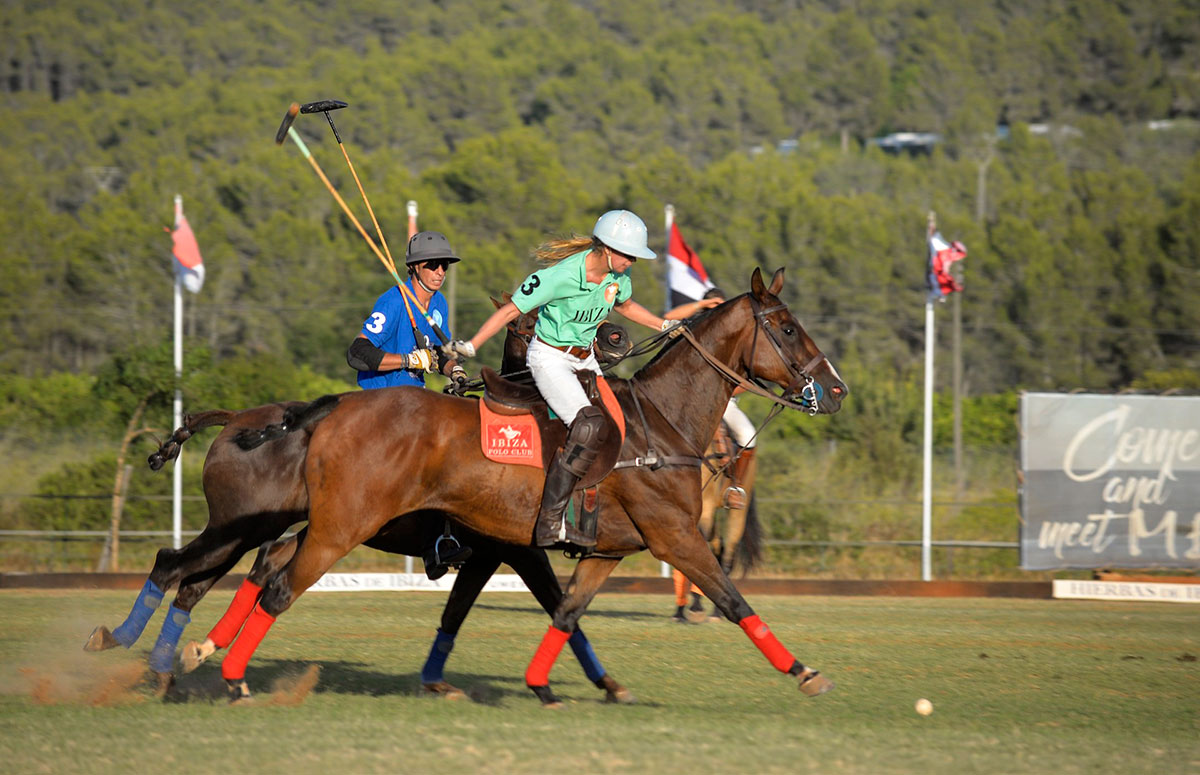

Subscribe to the Ampascachi Community and obtain benefits and exclusive content. Furthermore, we offer free advice on horses and equestrian tourism.
Saddle care and maintenance tips
With proper care and maintenance, your saddle should last for years. Here are some important tips we want to share with you:
- Saddle cleaning supplies: Bucket, sponges, glycerine soap, towels, bristle brush, small toothbrush, leather soap and conditioner.
- Daily cleaning: Ideally, you should clean your saddle every time you use it. Use a damp sponge to remove dirt and sweat. After letting the saddle dry, apply some leather conditioner.
- Thorough cleaning: Leather items under frequent use should be kept as clean as possible. Twice a month, after removing dirt and dust, clean with a damp sponge, rinsing the sponge several times. Let the saddle dry outdoors and then apply some glycerine soap using a small, circular motion.
- Cleaning synthetic saddles: In this case, we will use water and some mild soap and let it dry correctly.
- Storing your saddle: Keep your saddle in a tack room which is fairly dry and free of dust. Make sure that you store your saddle on an appropriate saddle rack. Ideally the room temperature should be 20ºC so that the leather does not wear away. If you are not going to use your saddle in a while, use a cover to protect it.
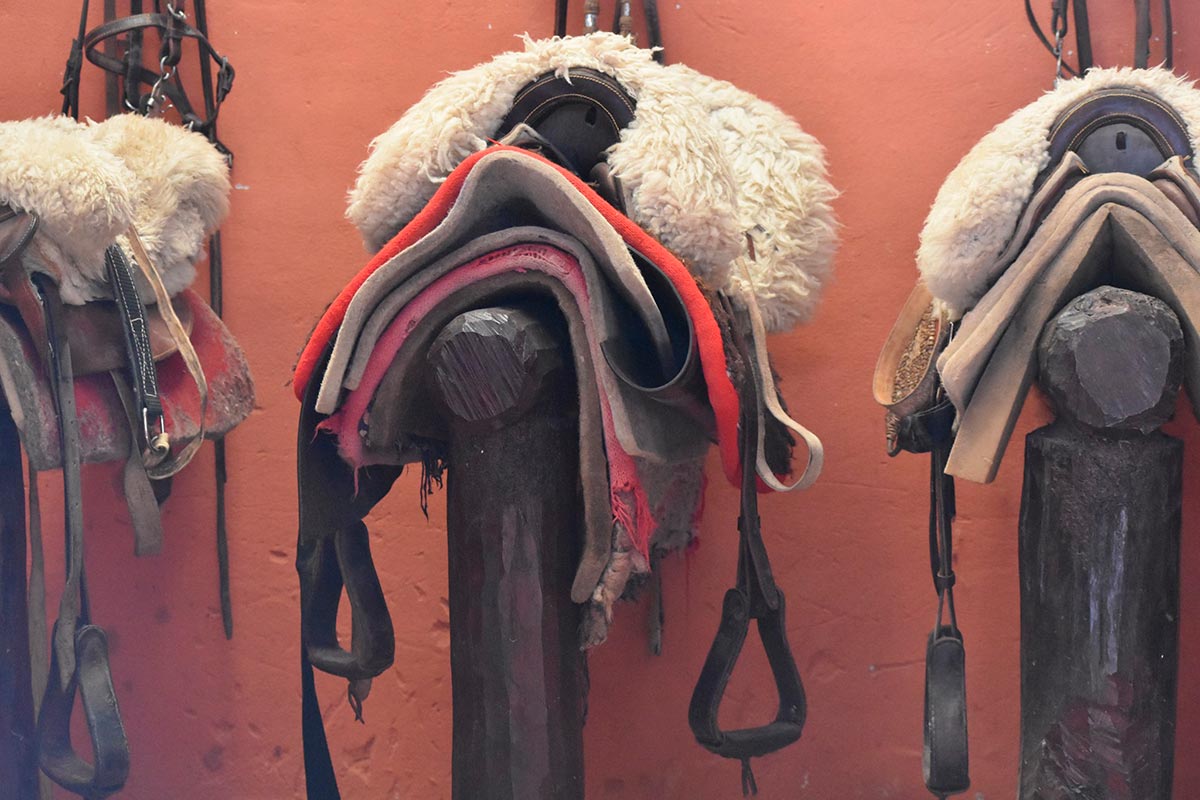
Summing up
As you have seen, the horse saddle is one of the most important tack items for any equestrian activity.
It is crucial to know which saddle is the most appropriate in each case and how to care for it.
We must also bear in mind that in each country you can find customized saddles, adapted to the specific conditions and needs.
At Ampascachi, we use our own saddle design, taking into account the horse breed we use on our horse riding holidays.
As Peruvian horse breeders, we decided to develop a type of saddle that fits the anatomy of our Peruvians and their distinctive gaits. This way, comfort and safety are guaranteed for both rider and horse during our riding trips.
Do you love horses and want to learn more about horse training?
Download our free guide on Horse training step by step. There we tell you everything we have learned about horse training in more than 25 years of experience.
And if you want to be a professional horse trainer and get field-based training, you should check out our training program. You will have the opportunity to live in our equestrian centre and experience our full training process with young horses.
~
THIS COULD ALSO BE INTERESTING
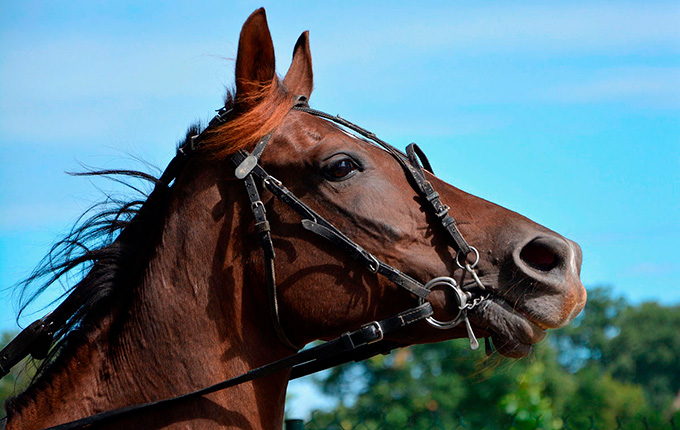
All you need to know about horse bits
In this article, we will discuss the different types of horse bits and how to select the right one for your horse. You will learn about the differences between snaffle and curb bits.
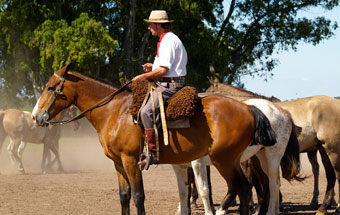
Diverse landscapes for horseback riding in Argentina
Argentina is waiting for you to ride in regions like Patagonia, the provinces of Cordoba, Salta and Jujuy and to visit the Iguazu Falls or cross the Andes.
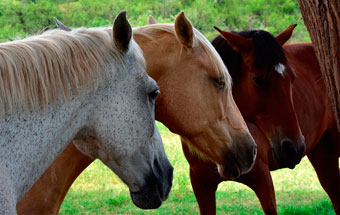
How can we tell if a horse is in pain?
Your horse’s behaviour and bodily signs are key to understanding if your animal is in pain. Learn about this for your horse’s well-being!
~
WHAT IS YOUR OPINION? LEAVE A COMMENT
Your comments
Hi! I really enjoyed reading your article. It is always valuable to find well-researched and written content about the equestrian world. I'm glad to see you highlight the importance of a proper saddle for the well-being of the horse and the safety of the rider. In my experience, finding a quality saddle can be a challenge. That's why, in our online store Curtisur, we offer a variety of horse saddles, carefully selected to meet the needs of riders and horses alike. I appreciate your dedication to educating the horse riding community and hope you will continue to share more insights in the future. Best regards! CURTISUR
It was nice that you suggested choosing a saddle with soft materials, especially since there are a lot of varieties to choose from. This reminds me of my cousin because he is interested in subscribing to an equestrian lifestyle page to get a subscription box every month. He wants to get items to help him have smooth horse-riding experiences, so it would be ideal to share your tips with him. https://www.themodernhorse.com/
Planning your horse riding holidays?
Join the Ampascachi Community. You will get exclusive advantages and guidance for your next horse riding holiday.


 German
German French
French Spanish
Spanish